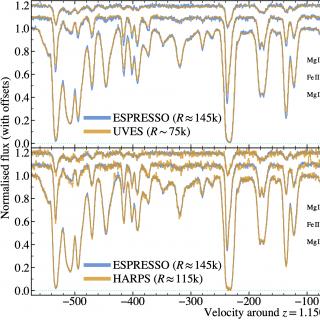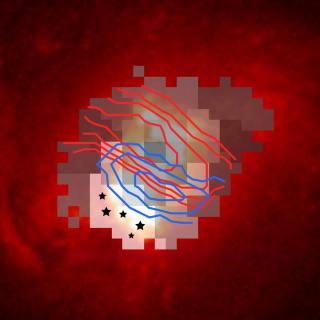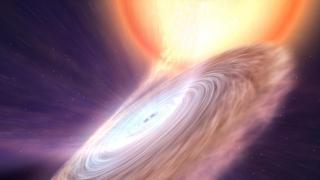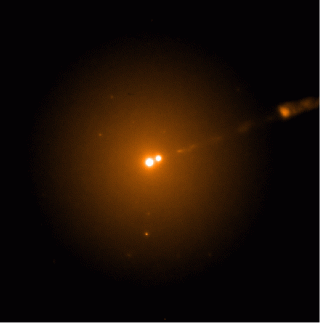
Many of the most basic and important physical phenomena are determined by a set of “fundamental constants”, whose values are experimentally known to high accuracy. A key aspect is to know whether they are “universal constants”, i.e., whether they have always had the same value across the Universe and throughout its history . Here we made use of data from the ESPRESSO spectrograph on the Very Large Telescope (VLT) in order to determine the value of the fine structure constant 8 thousand million years ago (when the Universe was just 40% its current age) by measuring spectral transitions in a

![Young Stellar Population distribution The left panel shows the young stellar population (YSP) distribution overlaid with contours showing the advancing side (blue) and receding side (red) of the outflow. The right panel shows the same but with contours of W80 (i.e. the width of the 5007 [OIII] line).](/sites/default/files/styles/crop_square_2_2_to_320px/public/images/news/ysp-wcont_f.jpg?h=4336e403&itok=AnitfTe8)


